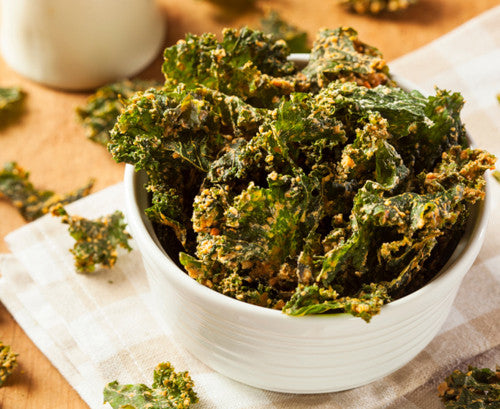
Paw-Proof Your Kitchen: Cleaning Courses for Pet Owners
Share
You're likely no stranger to the joy of sharing your kitchen with your furry friends, but you're also aware that it comes with its own set of unique cleaning challenges. To create a cleaner and healthier environment, start by tackling high-traffic areas and focusing on food and water bowl zones where dirt, crumbs, and spills accumulate. Pet hair and dander can cling to surfaces, making it a constant challenge to keep your kitchen clean. By learning effective pet stain removal methods and sanitizing high-touch areas, you'll be well on your way to maintaining a pet-proof kitchen. Now, take the next step to a fur-friendly space that's safe for both you and your pets.
Key Takeaways
• Start with high-traffic areas and focus on food and water bowl zones to create a cleaner and healthier environment for your pet.
• Invest in an air purifier and change vacuum filters regularly to tackle pet hair and dander that cling to kitchen surfaces.
• Use enzyme cleaners to break down protein-based stains and create a stain removal guide for quick reference in your pet-friendly kitchen.
• Sanitize high-touch pet areas regularly with pet-safe disinfectants to prevent germ and bacteria accumulation.
• Rethink your kitchen layout to maintain clear pathways and keep hazardous substances and fragile items out of your pet's reach.
Pet-Friendly Kitchen Cleaning Basics
When it comes to pet-friendly kitchen cleaning, start by tackling the high-traffic areas where your furry friends tend to congregate, such as around their food and water bowls. These areas tend to accumulate dirt, crumbs, and spills, making them a breeding ground for bacteria and germs. By focusing on these zones first, you'll create a cleaner and healthier environment for both you and your pets.
Next, take a closer look at your kitchen layout and storage strategies. Consider rearranging your cabinets and countertops to keep pet food and treats out of reach, reducing the likelihood of messes and contamination. Store pet supplies, such as bowls and toys, in easy-to-clean containers or bins to keep them organized and hygienic.
Tackling Pet Hair and Dander
Pet owners know all too well the struggles of dealing with pet hair and dander, which can cling to every surface and fabric in your home, making it a constant challenge to keep your kitchen clean and dust-free.
You've probably found yourself constantly wiping down surfaces, only to have them covered in hair again just hours later. But don't worry, there are steps you can take to tackle this pesky problem.
First, consider investing in an air purifier. These devices can help remove pet dander and hair from the air, reducing the amount that settles on surfaces.
You should also make sure to change your vacuum filters regularly, as clogged filters can spread pet hair and dander around your kitchen instead of sucking it up. Additionally, use a vacuum with a HEPA filter, which is designed to trap 99.97% of particles as small as 0.3 microns, including pet dander and hair.
Effective Pet Stain Removal Methods
Accidents will happen, and as a pet owner, you'll need a reliable arsenal of stain removal methods to tackle those inevitable messes. Don't worry, we're here to help! Effective pet stain removal methods are important in maintaining a clean and safe kitchen environment. One essential tool in your arsenal is enzyme cleaners. These biological wonders break down protein-based stains, like urine and feces, into harmless components. Another key technique is stain mapping, which involves identifying the source and type of stain to choose the best removal method.
Here's a quick reference guide to get you started:
| Stain Type | Enzyme Cleaner | Stain Mapping |
|---|---|---|
| Urine | Yes | Identify source, blot excess |
| Feces | Yes | Identify source, scoop excess |
| Vomit | No | Identify source, neutralize area |
| Blood | Yes | Identify source, apply cold water |
| Food | No | Identify source, wipe clean |
Sanitizing High-Touch Pet Areas
You've successfully tackled those pesky pet stains, but now it's time to turn your attention to the areas your furry friends frequent most, where germs and bacteria can quickly accumulate. These microbe hotspots and germ zones require regular sanitizing to keep you and your pets healthy.
Start by identifying high-touch areas, such as food and water bowls, pet beds, and surfaces around their favorite lounging spots. Use a pet-safe disinfectant to wipe down these areas, paying special attention to any crevices or grooves where germs can hide.
Don't forget to clean pet toys, especially those that go in their mouths. It's also essential to sanitize your hands after handling your pets or their belongings to prevent the spread of germs.
Maintaining a Pet-Proof Kitchen
Every day, your kitchen becomes a hub of activity for your furry friends, making it important to maintain a pet-proof space that's clean, safe, and free from hazards.
To achieve this, you'll need to rethink your kitchen layout. Consider rearranging your furniture to create a clear pathway for you and your pets to move around safely. This will help prevent accidents and reduce the risk of your pets getting into trouble.
When it comes to storage solutions, it's essential to keep hazardous substances and fragile items out of your pets' reach. Install high shelves or cabinets that are inaccessible to your pets, and store toxic cleaning products, sharp objects, and breakable items in these areas. Label each storage unit clearly, so you can quickly identify what's inside.
Frequently Asked Questions
How Often Should I Wash Pet Bedding and Toys?
You should wash pet bedding and toys weekly, using a mild detergent and fabric softener to reduce static and odors. For tough stains and odor control, add a 1/2 cup of white vinegar to the rinse cycle.
Can I Use a Robot Vacuum for Pet Hair?
You can use a robot vacuum for pet hair, but make sure to check its suction power and clean the brushes regularly for best performance, and don't forget to perform routine robot maintenance to keep it running smoothly.
Are All Essential Oils Safe Around Pets?
You're traversing a minefield when introducing essential oils around pets, like tiptoeing through a field of landmines. Not all oils are safe, as Oil Interactions and Pet Sensitivity vary; always research and consult with a vet to guarantee a harmonious coexistence.
Can I Clean Pet Areas With a Steam Cleaner?
You can safely use a steam cleaner on pet areas with pet-safe surfaces, like hardwood or tile, but avoid using it on carpets or upholstered furniture to prevent damage or moisture buildup.
How Do I Prevent Pets From Getting Into Cleaning Supplies?
To prevent pets from getting into cleaning supplies, you'll want to prioritize secure storage. Store them in locked cabinets or high shelves out of reach, ensuring you're the only one who can access them.
Related Posts
-

Baked Kale
Kale is one of the most healthiest and nutritious plant foods in existence and is delicious! Try these baked kale re...
-

7 Best Meal Planning Tools for Special Diets Online
You've got specific dietary needs, and meal planning can be overwhelming. Fortunately, you're not alone, and online t...

